Date : March 24 - 25, 2023
Report: Hiroshima Press Tour
post date : 2023.04.03
Over its long history, Hiroshima, where the G7 Summit will be held in May 2023, has passed on and developed many things which are unique or the best in Japan and say “This is Hiroshima,” and appeal to people both in Japan and worldwide. This tour covered Hiroshima’s traditional arts, history, food, and more.
A total of seven journalists participated in the tour, from media organizations based out of China, France, Hong Kong, Taiwan, the UK, and Japan (an English-language newspaper).
*This tour was sponsored by Citizens Council for the Hiroshima Summit and run by the FPCJ.
*For more details on the tour steps, see the press tour notice here.
[Day 1]
Hiroshima is known for farming nishikigoi carp, and Konishi Koi Farm has been doing so for over one hundred years. The tour heard from Konishi Koi Farm president Mr. Joji Konishi about the company’s history, the characteristics of nishikigoi, and how many are exported overseas. The journalists asked questions about how many nishikigoi are farmed, what the price range for them was, and the reasons for their popularity overseas. The journalists commented on their surprise when shown a meter-long carp, and took many pictures of it.
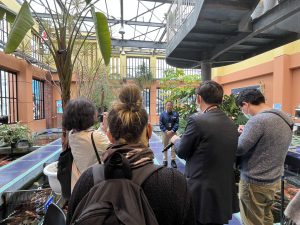

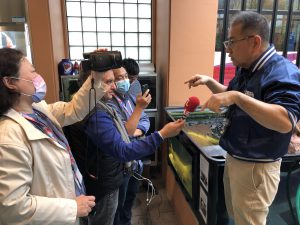
<Okosta>
Okosta, located near Hiroshima Station, is an okonomiyaki cooking studio operated by Otafuku Sauce Co., Ltd., and many foreign tourists have learned to cook okonomiyaki there. After hearing from Mr. Yosuke Haruna, a member of Otafuku Sauce’s Okonomiyaki Divison, about the characteristics and history of Hiroshima okonomiyaki, the journalists were taught how to make okonomiyaki themselves. The tour members seemed to enjoy their first experience of making okonomiyaki.
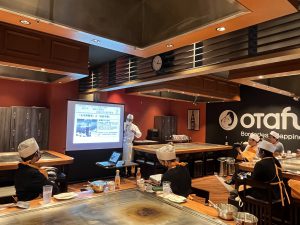
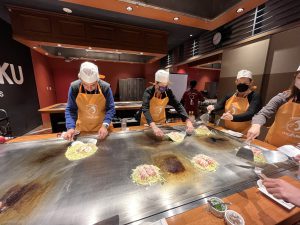
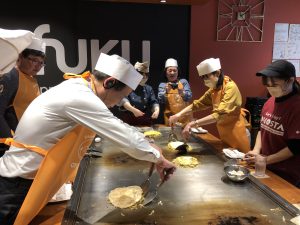
<Uedaryu Wafudo>
Ueda Sokoryu is a style of buke sado (samurai family tea ceremony) passed down by the Ueda clan, who were the chief retainers for the Hiroshima Domain. The tour heard from the next iemoto (head) of Ueda Sokoryu, Mr. Soko Ueda, about the characteristics of buke sado, its connections with the rest of the world, and how he went from being a professional dancer to the world of tea ceremony. The journalists asked questions about differences compared to other styles, promotion activities directed towards younger generations, and how his experience in dancing was being applied to tea ceremony. Afterwards, the group saw a tranquil tearoom and a garden where the seasons could be enjoyed, while enjoying tea and traditional Japanese sweets.

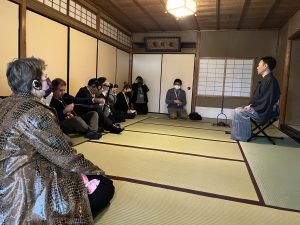

<Setouchi 7 Summit (Dinner Party)>
The tour joined the Setouchi 7 Summit, a dinner party held in Hiroshima City in which the governors of the seven prefectures on the Seto Inland Sea promote the attractions of their prefectures. Hiroshima Prefecture’s governor, Mr. Hidehiko Yuzaki, gave an explanation of the appeal of Hiroshima, followed by the journalists speaking with the governor individually. The meal also consisted of dishes made using ingredients from Hiroshima and local drinks.
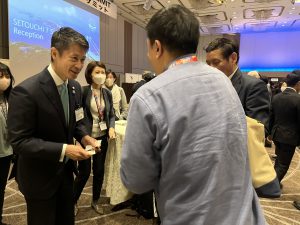
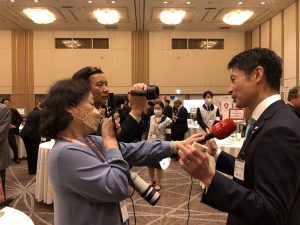
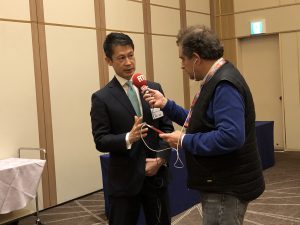
[Day 2]
<Hiroshima Kagura>
Hiroshima kagura, which originated as a ritual ceremony but elevated its aspects as performance art, is receiving attention within Japan and from around the world as a tourism resource for Hiroshima. Mr. Yuki Matsuda, head of the Kuwata Tenshi Kaguradan, explained the origins of Hiroshima kagura and its unique characteristics, and afterwards the journalists saw a performance of Yamata no Orochi, which they intently filmed and photographed while raising their voices in appreciation. The journalists asked questions about the costumes and props, what practice was normally like, and about performances overseas. Afterwards, they tired on a gorgeous costume that weighed over 20 kilograms, and held individual interviews with the performers.
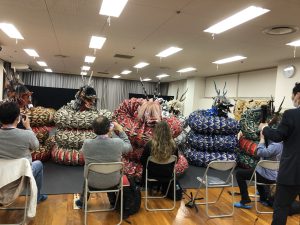

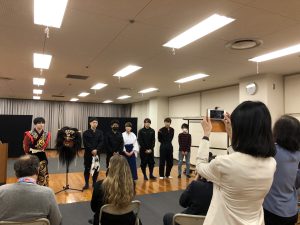
<Farm Suzuki>
Farm Suzuki, on the island of Osakikamijima, is the only place in Japan cultivating oysters in the ponds of a former salt farm. After a lunch of kuruma prawn and raw oysters, Farm Suzuki president Mr. Takashi Suzuki explained the characteristics of their salt-farm matured oysters Claire oysters, and the trail and error he went through before managing to develop these delicious oysters. The tour was also able to see the farm, machinery for separating oysters by size, and young oysters. The journalists asked questions about what the secret to farming oysters was, how many were exported overseas, and what effect climate change would have on farming oysters.
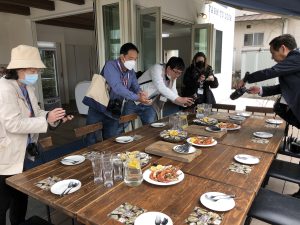
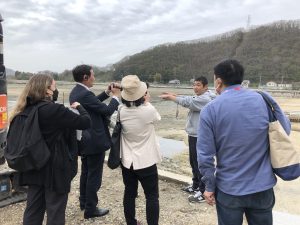

The tour visited Iwasaki Noen’s café and heard from Mr. Taro Iwasaki and Ms. Aki Iwasaki, the couple who run this lemon farm on Osakikamijima, about the characteristics of the island’s lemons, what made them decide to relocate there, what life on the island is like, and the support they provide to trainees interested in running their own farm. The journalists asked questions about why the couple decided to switch jobs to lemon farming, how their quality of life changed with the move, and whether they felt there was a growing number of people interested in farming or relocating.
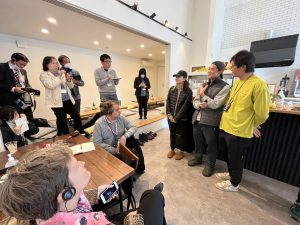
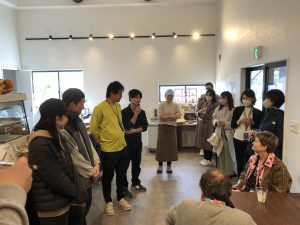

◆Below is some of the reporting based on this tour.
The Japan Times
「Want to ‘live like a human’? Escape to a Seto island」(June 17)
The Japan Times
「‘Life is for being who I am — not who others expect me to be’」(November 11)



